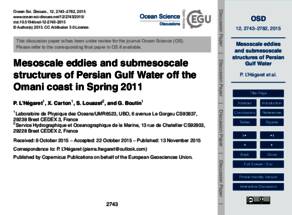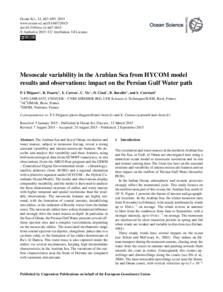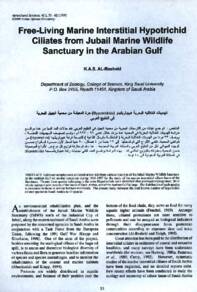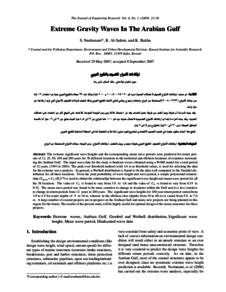Document
Mesoscale eddies and submesoscale structures of Persian Gulf water off the Omani coast in spring 2011.
Identifier
DOI: 10.5194/os-12-687-2016
Contributors
Publisher
Ocean Science Discussions.
Gregorian
2015-11
Language
English
English abstract
The Persian Gulf produces high-salinity water (Persian Gulf Water, PGW hereafter), which flows into the Sea of Oman via the Strait of Hormuz. Beyond the Strait of Hormuz, the PGW cascades down the continental slope and spreads in the Sea of Oman under the influence of the energetic mesoscale eddies. The PGW outflow has different thermohaline characteristics and pathways, depending on the season. In spring 2011, the Phys-Indien experiment was carried out in the Arabian Sea and in the Sea of Oman. The Phys-Indien 2011 measurements, as well as satellite observations, are used here to characterize the circulation induced by the eddy field and its impact on the PGW pathway and evolution. During the spring intermonsoon, an anticyclonic eddy is often observed at the mouth of the Sea of Oman. It creates a front between the eastern and western parts of the basin. This structure was observed in 2011 during the Phys-Indien experiment. Two energetic eddies were also present along the southern Omani coast in the Arabian Sea. At their peripheries, ribbons of freshwater and cold water were found due to the stirring created by the eddies. The PGW characteristics are strongly influenced by these eddies. In the western Sea of Oman, in 2011, the PGW was fragmented into filaments and submesoscale eddies. It also recirculated locally, thus creating salty layers with different densities. In the Arabian Sea, a highly saline submesoscale lens was recorded offshore. Its characteristics are analyzed here and possible origins are proposed. The recurrence of such lenses in the Arabian Sea is also briefly examined.
Member of
ISSN
1812-0784
Resource URL
Category
Journal articles




